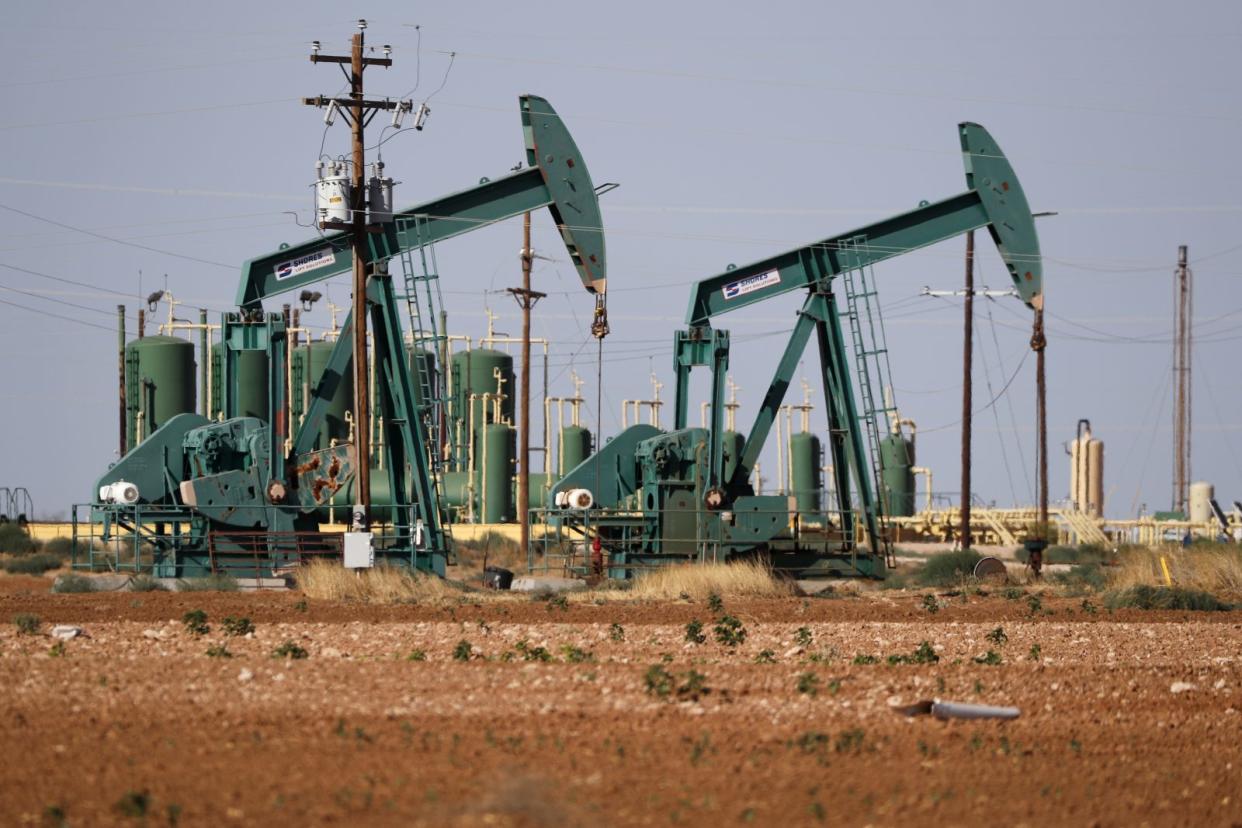Oil Crashes More Than $10 as New COVID-19 Variant Roils Markets

- Oops!Something went wrong.Please try again later.
A pump jack operating in an oil field in Midland, Texas, on July 29, 2020. Credit - Tony Gutierrez—AP
Oil prices suffered one of the largest ever one-day plunges, crashing more than 11% on Black Friday as a new coronavirus strain sparked fears that renewed lockdowns will hurt global demand.
The crash, the 7th largest ever for Brent crude, the global oil benchmark, may prompt the OPEC+ cartel to re-consider its policy when it meets next week, with the group increasingly leaning toward pausing its output hikes.
The sell-off was amplified by low liquidity on a festive day in the U.S., the breach of several technical supports and Wall Street banks rushing to dump oil futures to protect themselves against positions in the options market.
The development apparently wrong-footed many in the oil market who had been comforted by low inventory levels and demand that had rebounded to 2019 levels, said Rebecca Babin, senior energy trader at CIBC Private Wealth Management.
“It was a lack of downside that had us continuing to think nothing bad could happen,” she said. “No one was thinking we could get a variant that we’re not familiar with and it could have meaningful impact.
The price drop capped a dramatic week for the oil market, which started when U.S. President Joe Biden challenged OPEC+ by tapping the country’s strategic petroleum reserve in an effort to bring gasoline prices down. China, India, Japan and South Korea all joined the American effort.
Oil traders and analysts were divided about whether the flash crash was an excessive reaction to the covid news. Damien Courvalin, oil analyst at Goldman Sachs in New York, called the drop an “excessive repricing” and ventured OPEC+ will respond pausing its production increases by three months.
High gasoline retail prices prompted U.S. President Joe Biden to seek ways to ease the pressure on consumers, leading to Tuesday’s announcement that the U.S. will release 50 million barrels of crude from the Strategic Petroleum Reserve, with China, Japan, India, South Korea and the U.K. also set to tap inventories. Still, oil rose on the day that the move was confirmed, suggesting traders had already priced in the new supply, or that they were underwhelmed by the supply response.
OPEC+ had warned previously it would reconsider a potential output increase if other nations went ahead with a reserve release. UBS Group AG said Friday that OPEC+ could choose to pause its current planned output hike of 400,000 barrels a day, or even cut production.
OPEC+ Leans Toward Ditching Output Hike as Oil Sinks on Virus
“It’s a sign the market got carried away from itself and that we still remain very vulnerable to Covid-19,” said John Kilduff, founding partner at Again Capital LLC.Aside from the headline prices, crude traders also watched several other notable shifts in the market. WTI crude futures closed below its 200-day and 100-day moving averages, signs of technical weakness. The extreme pressure on the U.S. benchmark meant its discount to Brent expanded, reaching the widest since May 2020.
The picture wasn’t much brighter in oil-product markets, the part of the oil complex most directly affected by end-user demand. Diesel plunged, particularly in Asia, as the market began to price in a potential renewed hit to economic growth.
“This is a huge overreaction in terms of the market,” Amrita Sen, chief oil analyst at consultant Energy Aspects Ltd. said in a Bloomberg Television interview. “This is the market pricing in the worst possible scenarios.”
–With assistance from Alex Longley and Javier Blas.

